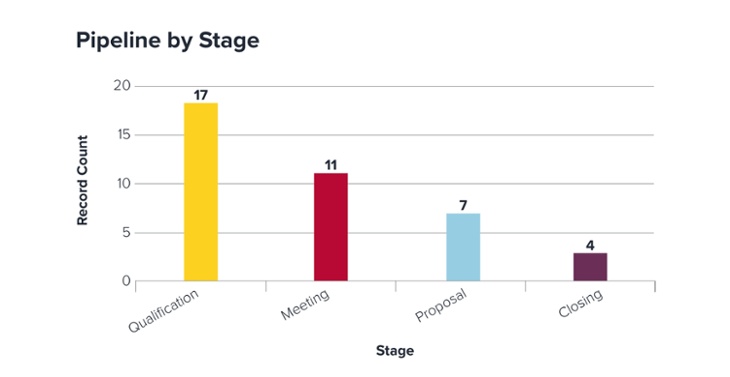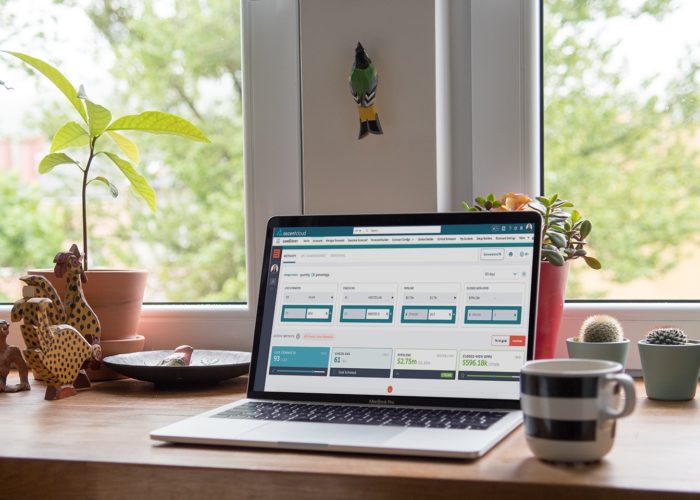Sales pipeline management and forecast reliability is arguably one of a sales manager’s most important tasks. Executives rely upon forecasts – and the resulting revenue – for the health of the organization. No one likes surprises when pipeline evaporates near the end of the quarter so it’s important to trust that deals are real when making business decisions and planning.
Of course it’s important to establish standards and make sure sales teams understand how to document and manage their pipeline throughout the year, but stepping back to assess pipeline health periodically gives managers a chance to coach reps and re-enforce or update pipeline hygiene practices. You may think that the end of the year isn’t the best time to assess pipeline health, but you’d be wrong. Assessing pipeline health at the end of the year can help an organization start the new year off as strong as possible.
The end of the year is when you need to be realistic, where is your pipeline at right now? Is pipeline large enough to hit goals this period? What about next period? Are the deals being actively worked? Or just repeatedly pushed? Which reps are overly optimistic? And which reps are sandbaggers? Although most companies have a clear idea of how the year will end by the time they are in their final quarter, it’s not just about meeting Q4 quota. Your pipeline health at the end of the year is your pipeline health at the beginning of the year. Having a clear knowledge of your sales pipeline health before Q1 starts is crucial to going into the new year at full force. Use the momentum of Q4 to propel and inspire your team to keep it up in the new year.
Are you wondering how to best assess your sales pipeline health? Ask yourself these five questions below to get you started on painting a clear picture of where your organization stands as we get closer to Q1.
Questions To Ask Yourself To Assess Your Sales Pipeline Health
Question 1:
Is your pipeline accessible and up to date?
Part of maintaining a healthy pipeline is ensuring that information given to your team is accurate. This helps to keep everyone on the same page regarding all active deals. Although this can seem tedious to reps, it is very important. Activities such as keeping good call and email notes within your CRM allow other team members to get caught up on a deal’s progress efficiently.
Having an accessible and up to date sales pipeline can also be used after a deal is closed or loss to see what went right (or wrong). Comparing notes from deals that closed with those that didn’t is a great way to recognize patterns in your pipeline and adjust your tactics for the next pursuit.
Question 2:
What is the shape of your sales pipeline?
If you automatically picture a funnel when thinking about the shape of your sales pipeline, you may not be on the right track. Although the funnel shape is the most common pipeline shape, it’s not the most productive. Instead, your pipeline should look more like a cocktail glass, wide at the top, tapering off faster. The reason for this? Directly after the first process milestone (discovery call or demo) should be when the most deals are dropped, allowing those that remain to slide through the rest of the process. After this, not many more deals should be lost as they should all be highly likely to close after completing the first process milestone. Although this may sound bad at first, it really is a good thing! This means the “bad” deals are getting taken out of the pipeline earlier, allowing only those that are more certain to close to move on. Wouldn’t you rather have less deals of a higher quality further into your pipeline instead of many deals that aren’t super likely to close? Have a cocktail glass shaper pipeline is what’s best for your organization’s deals. High-performing reps often maintain a 1.25x or 1.5x ratio of opportunities to deals in their pipelines, this mimics a cocktail glass, not a funnel. Sales organizations as a whole often need 3.5x to 5x ratio of opportunities to deals for a given period.
Although this may sound bad at first, it really is a good thing! This means the “bad” deals are getting taken out of the pipeline earlier, allowing only those that are more certain to close to move on. Wouldn’t you rather have less deals of a higher quality further into your pipeline instead of many deals that aren’t super likely to close? Have a cocktail glass shaper pipeline is what’s best for your organization’s deals. High-performing reps often maintain a 1.25x or 1.5x ratio of opportunities to deals in their pipelines, this mimics a cocktail glass, not a funnel. Sales organizations as a whole often need 3.5x to 5x ratio of opportunities to deals for a given period.
Question 3:
Is your sales pipeline moving? When are deals purged?
All reps know to close a deal as lost a deal if a prospect buys from a competitor or flat out says no, but what about the less obvious no? For example, leads that originally express interest but then go dark are hard for a lot of reps to let go of. They were interested at one point, right? This wishful thinking may help ‘fill’ their pipeline, but it won’t be quality. Although it’s ok for reps to check in now and again, these deals should be removed from their pipeline within a reasonable amount of time, 30 days is standard. This helps ensure pipeline health and a continuous flow of leads that are more likely to close sooner.
Putting dark or less promising leads in a bucket to come back to is more effective than letting them sit stagnant in your pipeline. Allow marketing or even your sales development team to nurture the lead until they’re ready to talk. This ensures pipeline health without completely losing leads who aren’t moving through the process.
Question 4:
Do you have enough prospects at each stage of your pipeline?
This may be the most important question yet as it is a great measure of both current and future pipeline health. Going back to the shape of your pipeline, there should be more deals in the first stage than any of the others. This is because you can’t be sure if a lead should move along until the first process milestone, causing the top of your cocktail glass to be much more full then the stem. One mistake that is often made regarding the number of deals in each stage is too much focus on deals in the closing stage. This causes important activities such as prospecting and the creation of new opportunities to be forgotten. Solely focusing on deals that are about to close will leave you with nothing when they do. Instead, there should be a healthy amount of deals at each stage in the pipeline, preferably those that are most likely to move forward.
One mistake that is often made regarding the number of deals in each stage is too much focus on deals in the closing stage. This causes important activities such as prospecting and the creation of new opportunities to be forgotten. Solely focusing on deals that are about to close will leave you with nothing when they do. Instead, there should be a healthy amount of deals at each stage in the pipeline, preferably those that are most likely to move forward.
Question 5:
Do you know which deals within your pipeline you need to focus on?
You are probably already aware that you will not close every deal in your pipeline (we can dream though, right?). While some salespeople may choose to try and chase everything in their sights as a strategy, that is not efficient or effective. Instead, salespeople should be focusing on deals that meet certain qualifications.
These qualifications should vary by stage, establishing a laser focus on the right deals. This allows a rep to have a better idea of how many deals are likely to close and how many to expect to drop out at each stage. Qualifications may include a certain amount of conversations or inclusion of a decision-maker.
Assessing sales pipeline health and establishing sound pipeline hygiene policies and processes is one of the most important things you can do for your sales team as you enter the new year. Having reliable data, the correct mix of active deals, and knowing when to drop deals are all important factors to consider when auditing your pipeline.
Looking for an easier way to see what activities lead to a healthy pipeline? Request a free, personalized demo of LevelEleven!

